By Eric J. Savitz, editor-in-chief, General Motors
By Eric J. Savitz, editor-in-chief, GM News
It’s now been more than 72 years since General Motors unveiled the first Chevrolet Corvette, giving birth to one of America’s most iconic automobile models – and the world’s longest running continuously produced passenger car. Over the last seven-plus decades, more than 1.9 million Corvettes have been sold and counting.
It’s been a long journey. And there is so much road ahead.
In the beginning
You can date the start of the Corvette story to January 17, 1953, opening day for GM’s Motorama auto show in the Waldorf-Astoria hotel in New York City. Motorama was a traveling expo GM held periodically from 1949 to 1961 which featured both current year models and concept cars from all of GM’s major brands. After the New York edition of the 1953 show, Motorama hit the road, visiting Miami, Chicago, Los Angeles, San Francisco, Dallas, and Kansas City – all told, more than 4 million people would visit the 1953 edition of the event, with the Corvette concept car one of the star attractions. Chevy launched production a few months later. (For another look at Motorama, check out our recent GM Theater story on the 1956 short film, “Design for Dreaming,” which was produced for the show.)
Caption: The Chevrolet Corvette on display at the 1953 Motorama auto show.
That first Corvette already had some of the car’s classic elements – it was a sleek, two-seat, convertible roadster – but the truth is that the historic ‘53 ‘Vette looked a little more muscular than it was in reality.
The Corvette was the result of a secretive project led by GM’s legendary design chief Harley Earl called “Project Opel.” Noting the success of imported European sports cars from automakers like Jaguar and MG, Earl and his team began work on an affordable two-seater for GM in 1951. (In his book “The Driving Machine” about the history of automotive design, author Witold Rybczynski notes that there was debate about where the car would fit into the GM family; in an alternative universe we’d be talking about the Cadillac Corvette.)
Caption: Near the end of the assembly line for the 1953 Chevrolet Corvette, in Flint, Michigan.
The designers used an underpowered straight-six “Blue Flame” engine - based on a truck engine called the Stovebolt Six that dated back to 1929. That prototype ‘Vette was capable of 150 horsepower (compare that to the max 1,250 combined horses1 from the 2026 Corvette ZR1X), sported a two-speed automatic transmission and had a top speed of 108 miles per hour. It was a tiger on the outside, but a kitten on the inside.
Name game
Until late 1952, the car wasn’t just light on power, it was lacking a name. Credit the Corvette moniker to Myron Scott, a member of the GM public relations team, whose other claim to fame was organizing the All-American Soap Box Derby. According to various accounts, GM held a contest to name the car which came up with 300 potential options and chose none, opting instead for Scott’s idea. (A “corvette” is a word of French origin for a small, fast frigate, which were widely deployed by the British Navy during World War II.)
Caption: The first production Corvette, built in Flint, Michigan, June 30, 1953.
Encouraged by the reception for the car at Motorama, GM built 300 fiberglass-bodied Corvettes in a facility in Flint, Michigan by the end of 1953, with the first cars hitting showrooms in June of that year. This was the first mass-produced car with a plastic-laminated fiberglass body. All of them came in “Polo White” paint with a “Sportsman Red” interior, like the Motorama prototype. (Corvette production moved to St. Louis in 1954, and then shifted to the current site in Bowling Green, Kentucky, in 1981. The National Corvette Museum is just down the road from Bowling Green Assembly.)
Serving the masses
It is almost forgotten that the first Corvette was intended to be affordable – a speedster for the masses. The Chevrolet press release announcing the launch of the ’53 Corvette said Chevy was offering optional radio and heaters, whiel noting that they came equipped with “windshield wipers, turn indicators, electric clock and other conveniences not commonly associated with vehicles of this type.” (Hard to imagine a world where a heater - for a car built in Michigan - was an optional feature.) The original price: $3,498, which on an inflation adjusted basis would be equal to about $42,000 today.
Caption: The steering wheel of the 1953 Chevrolet Corvette.
Thomas Keating, general manager of Chevrolet at the time of the Corvette launch, had some prophetic words about the car in that press release about the car’s 1953 debut. “[W]e have built a sports car in the American tradition,” he said. “It is intended to satisfy the American public’s conception of beauty, plus comfort, convenience and performance.”
And that it has, Tom, that it has.
They did what?
If you happen to own a ’53 ‘Vette, congratulations, you have an extremely valuable piece of Americana which would likely sell for six figures at auction. But alas, that first show car displayed at Motorama came to a horrifying end: at the end of the 1953 Motorama tour, the chassis was repurposed for use in a 1954 Motorama vehicle called the Chevy Nomad station wagon, a vehicle produced from 1955 to 1961, with a return to the market from 1968 to 1972. But here’s the really unfortunate part: GM shipped the body to the Milford Proving Grounds, where engineers – I can’t believe I have to type this – set it on fire as part of a flammability test of fiberglass body panels. A second pre-production ‘Vette, displayed at various car shows, was likewise eventually reduced to scrap.
Caption: An ad for the 1953 Chevrolet Corvette, designed to be published by dealers in local newspapers.
Of course, the Corvette’s popularity grew over time. In 1954, a second color choice was added – blue. In 1956, Corvettes switch to V-8 engines. Not until 1963 was the Corvette available as a hard-top coupe. Other changes and variations followed. In a 2013 press release marking the 60th anniversary of the Corvette, one GM exec declared that it had become “the car of choice for movie stars, musicians and astronauts.”
The Corvette continues to make history. The current lineup ranges from the entry level Corvette Stingray to the Corvette ZR1X supercar. Earlier this year, the ZR1X, with Chevy engineer Drew Catrell at the wheel, set a record for fastest lap time ever by a non-professional driver at Germany’s famed Nürburgring. That car goes zero to 60 in under two seconds.2 GM President Mark Reuss last year drove a Corvette ZR1 233 mph, the highest speed ever recorded by any production car priced under $1 million. And you know Harley Earl would be smiling about that.
Caption: The 1953 Chevrolet Corvette on the track at the Milford Proving Ground, Milford, Michigan.
Eric J. Savitz, a former reporter and columnist with Barron’s, Forbes, and other publications, is editor-in-chief at GM News. Reach him at news@gm.com.
111,064 horsepower from the LT7 5.5L V8 engine plus 186 horsepower from the eAWD (electric drive unit).
2On a closed course only. Based on initial vehicle movement.
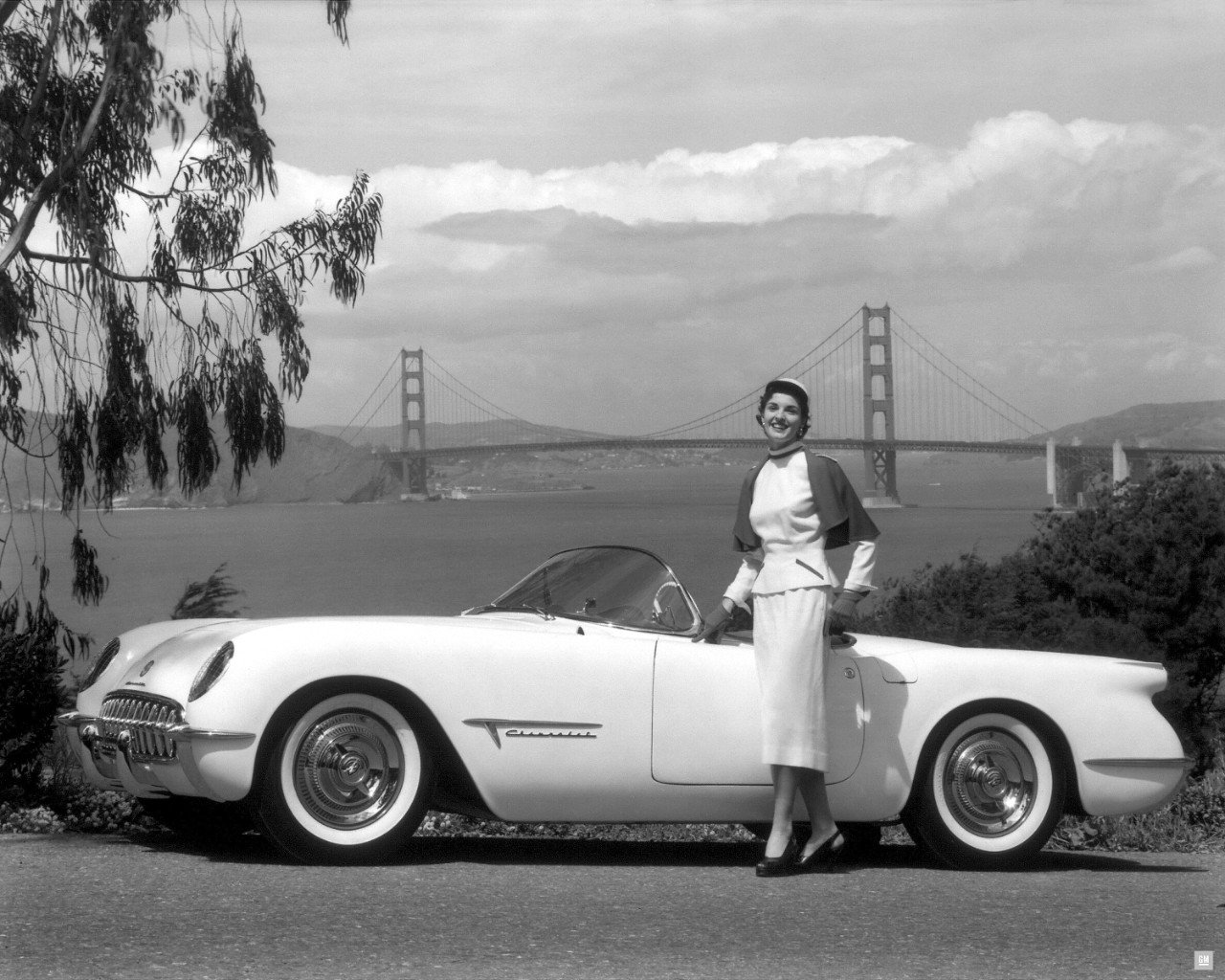
It’s now been more than 72 years since General Motors unveiled the first Chevrolet Corvette, giving birth to one of America’s most iconic automobile models – and the world’s longest running continuously produced passenger car. Over the last seven-plus decades, more than 1.9 million Corvettes have been sold and counting.
It’s been a long journey. And there is so much road ahead.
In the beginning
You can date the start of the Corvette story to January 17, 1953, opening day for GM’s Motorama auto show in the Waldorf-Astoria hotel in New York City. Motorama was a traveling expo GM held periodically from 1949 to 1961 which featured both current year models and concept cars from all of GM’s major brands. After the New York edition of the 1953 show, Motorama hit the road, visiting Miami, Chicago, Los Angeles, San Francisco, Dallas, and Kansas City – all told, more than 4 million people would visit the 1953 edition of the event, with the Corvette concept car one of the star attractions. Chevy launched production a few months later. (For another look at Motorama, check out our recent GM Theater story on the 1956 short film, “Design for Dreaming,” which was produced for the show.)
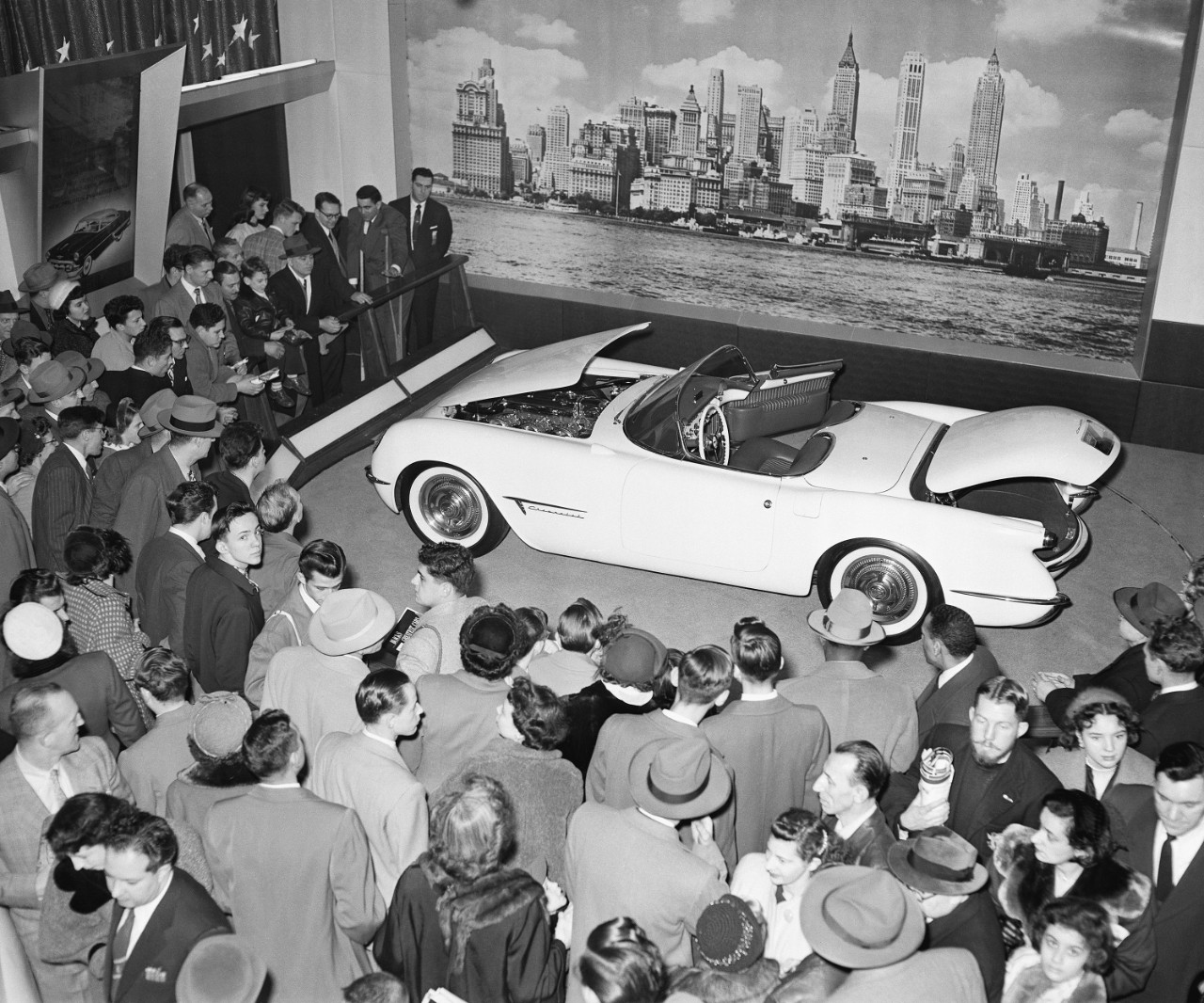
That first Corvette already had some of the car’s classic elements – it was a sleek, two-seat, convertible roadster – but the truth is that the historic ‘53 ‘Vette looked a little more muscular than it was in reality.
The Corvette was the result of a secretive project led by GM’s legendary design chief Harley Earl called “Project Opel.” Noting the success of imported European sports cars from automakers like Jaguar and MG, Earl and his team began work on an affordable two-seater for GM in 1951. (In his book “The Driving Machine” about the history of automotive design, author Witold Rybczynski notes that there was debate about where the car would fit into the GM family; in an alternative universe we’d be talking about the Cadillac Corvette.)
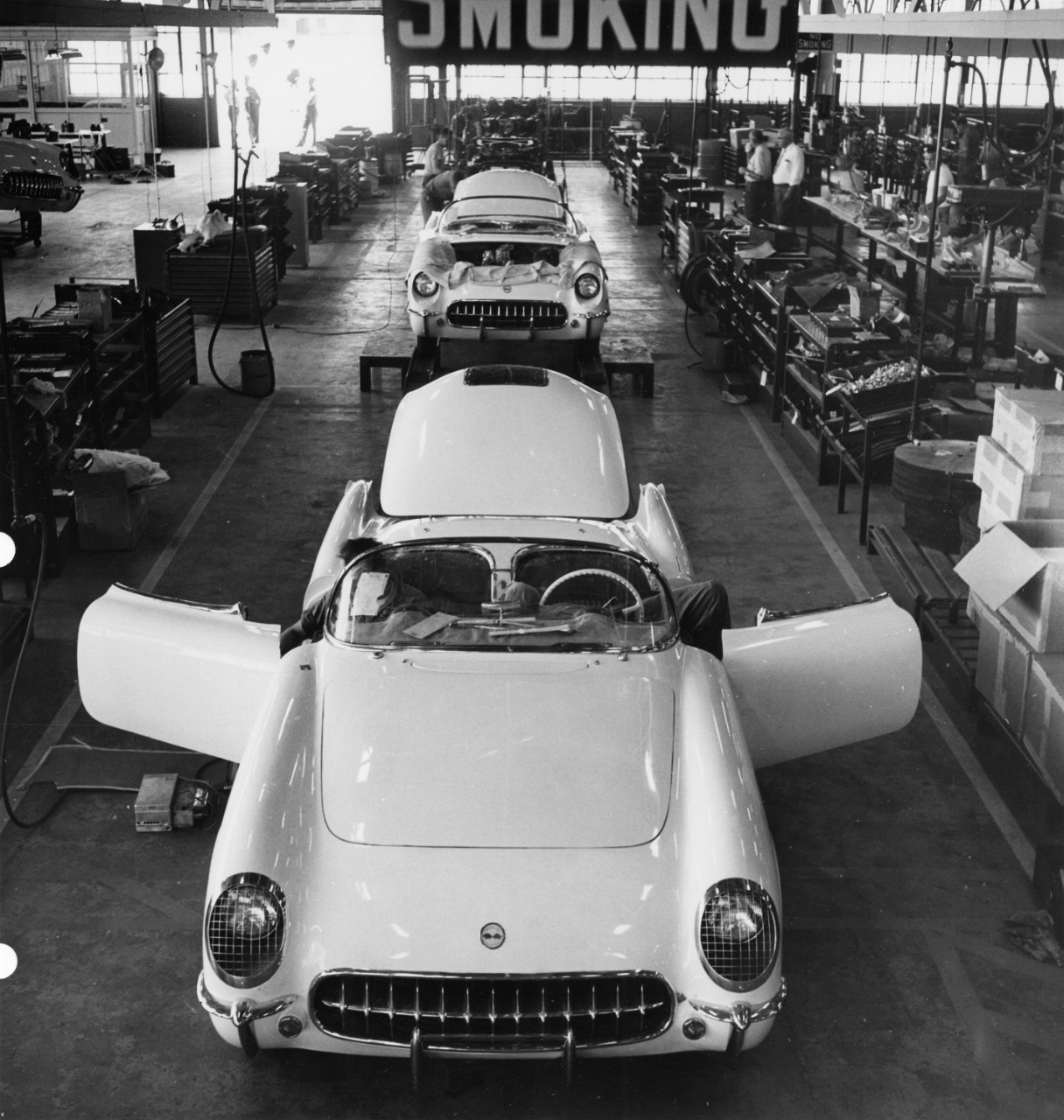
The designers used an underpowered straight-six “Blue Flame” engine - based on a truck engine called the Stovebolt Six that dated back to 1929. That prototype ‘Vette was capable of 150 horsepower (compare that to the max 1,250 combined horses1 from the 2026 Corvette ZR1X), sported a two-speed automatic transmission and had a top speed of 108 miles per hour. It was a tiger on the outside, but a kitten on the inside.
Name game
Until late 1952, the car wasn’t just light on power, it was lacking a name. Credit the Corvette moniker to Myron Scott, a member of the GM public relations team, whose other claim to fame was organizing the All-American Soap Box Derby. According to various accounts, GM held a contest to name the car which came up with 300 potential options and chose none, opting instead for Scott’s idea. (A “corvette” is a word of French origin for a small, fast frigate, which were widely deployed by the British Navy during World War II.)
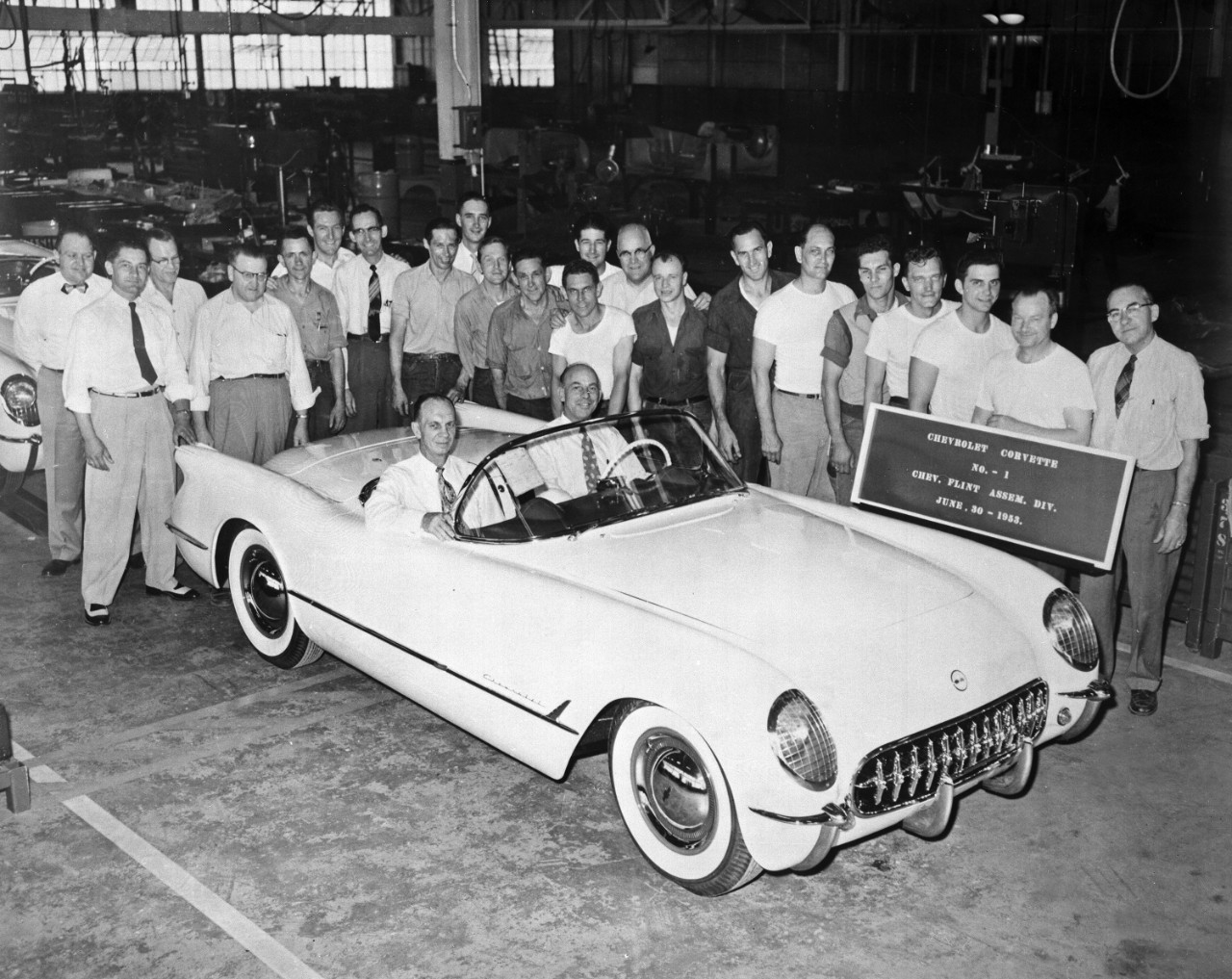
Encouraged by the reception for the car at Motorama, GM built 300 fiberglass-bodied Corvettes in a facility in Flint, Michigan by the end of 1953, with the first cars hitting showrooms in June of that year. This was the first mass-produced car with a plastic-laminated fiberglass body. All of them came in “Polo White” paint with a “Sportsman Red” interior, like the Motorama prototype. (Corvette production moved to St. Louis in 1954, and then shifted to the current site in Bowling Green, Kentucky, in 1981. The National Corvette Museum is just down the road from Bowling Green Assembly.)
Serving the masses
It is almost forgotten that the first Corvette was intended to be affordable – a speedster for the masses. The Chevrolet press release announcing the launch of the ’53 Corvette said Chevy was offering optional radio and heaters, while noting that they came equipped with “windshield wipers, turn indicators, electric clock and other conveniences not commonly associated with vehicles of this type.” (Hard to imagine a world where a heater - for a car built in Michigan - was an optional feature.) The original price: $3,498, which on an inflation adjusted basis would be equal to about $42,000 today.
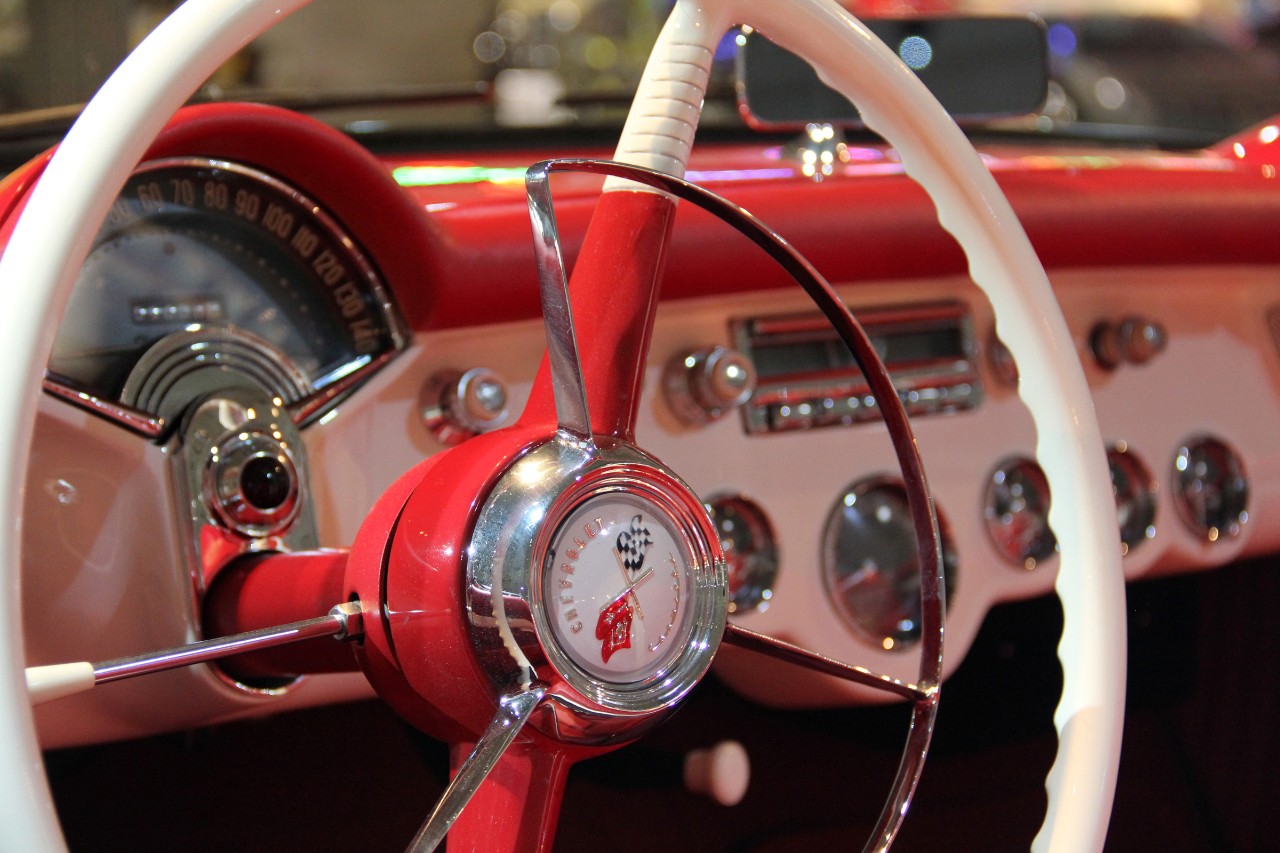
Thomas Keating, general manager of Chevrolet at the time of the Corvette launch, had some prophetic words about the car in that press release about the car’s 1953 debut. “[W]e have built a sports car in the American tradition,” he said. “It is intended to satisfy the American public’s conception of beauty, plus comfort, convenience and performance.”
And that it has, Tom, that it has.
They did what?
If you happen to own a ’53 ‘Vette, congratulations, you have an extremely valuable piece of Americana which would likely sell for six figures at auction. But alas, that first show car displayed at Motorama came to a horrifying end: at the end of the 1953 Motorama tour, the chassis was repurposed for use in a 1954 Motorama vehicle called the Chevy Nomad station wagon, a vehicle produced from 1955 to 1961, with a return to the market from 1968 to 1972. But here’s the really unfortunate part: GM shipped the body to the Milford Proving Grounds, where engineers – I can’t believe I have to type this – set it on fire as part of a flammability test of fiberglass body panels. A second pre-production ‘Vette, displayed at various car shows, was likewise eventually reduced to scrap.
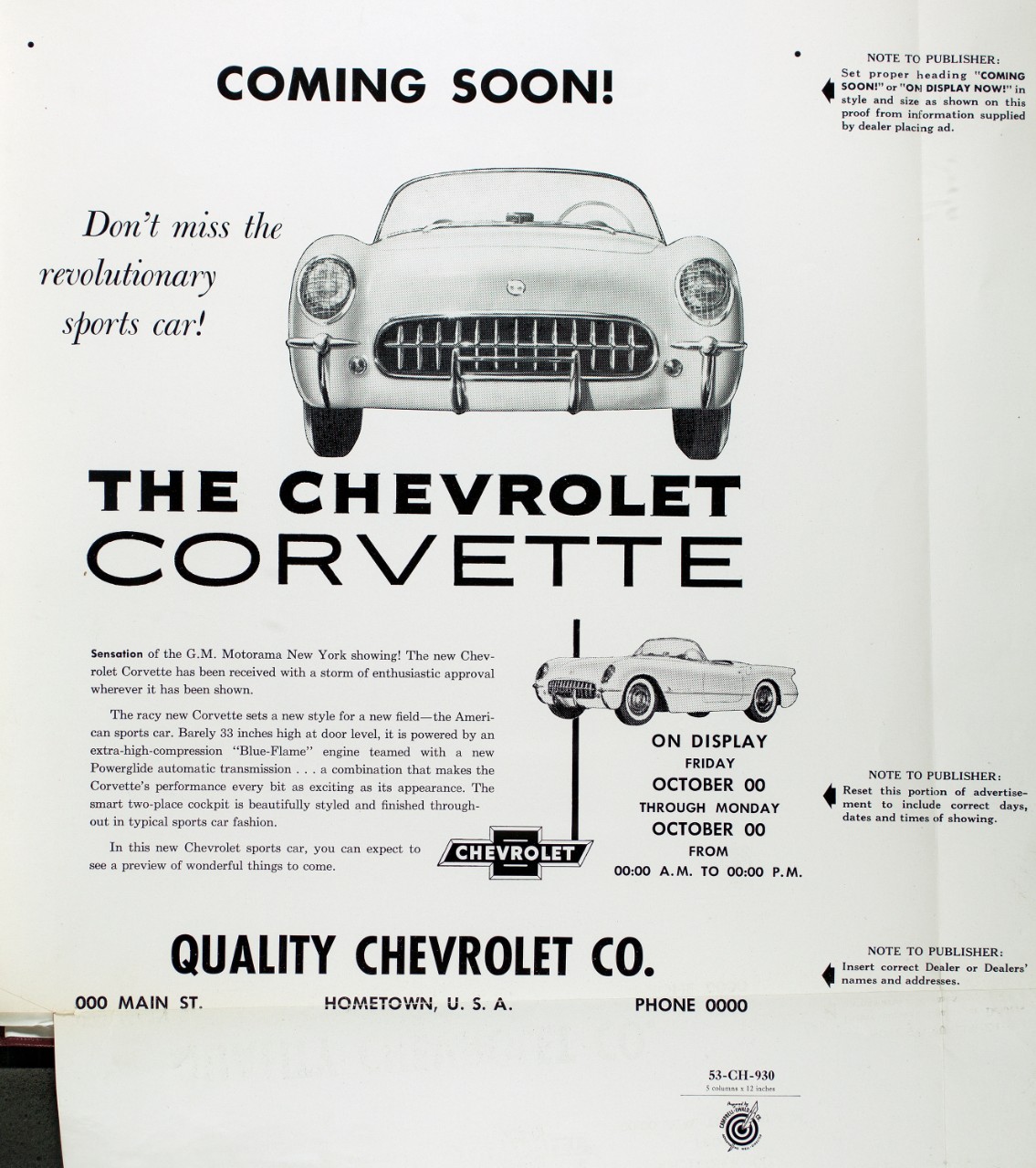
Of course, the Corvette’s popularity grew over time. In 1954, a second color choice was added – blue. In 1956, Corvettes switch to V-8 engines. Not until 1963 was the Corvette available as a hard-top coupe. Other changes and variations followed. In a 2013 press release marking the 60th anniversary of the Corvette, one GM exec declared that it had become “the car of choice for movie stars, musicians and astronauts.”
The Corvette continues to make history. The current lineup ranges from the entry level Corvette Stingray to the Corvette ZR1X supercar. Earlier this year, the ZR1X, with Chevy engineer Drew Catrell at the wheel, set a record for fastest lap time ever by a non-professional driver at Germany’s famed Nürburgring. That car goes zero to 60 in under two seconds.2 GM President Mark Reuss last year drove a Corvette ZR1 233 mph, the highest speed ever recorded by any production car priced under $1 million. And you know Harley Earl would be smiling about that.
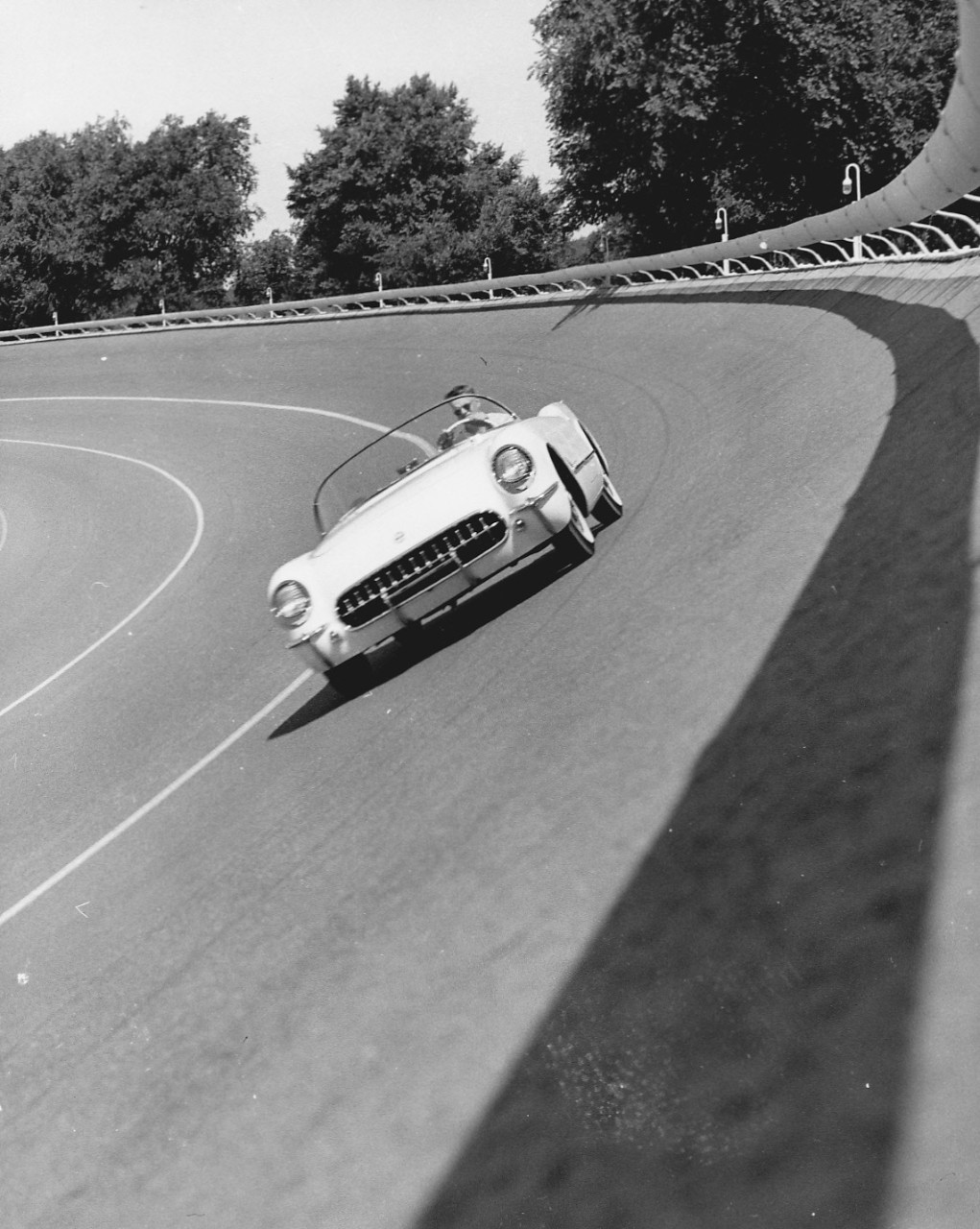
Eric J. Savitz, a former reporter and columnist with Barron’s, Forbes, and other publications, is editor-in-chief at GM News. Reach him at news@gm.com.
111,064 horsepower from the LT7 5.5L V8 engine plus 186 horsepower from the eAWD (electric drive unit).
2On a closed course only. Based on initial vehicle movement.